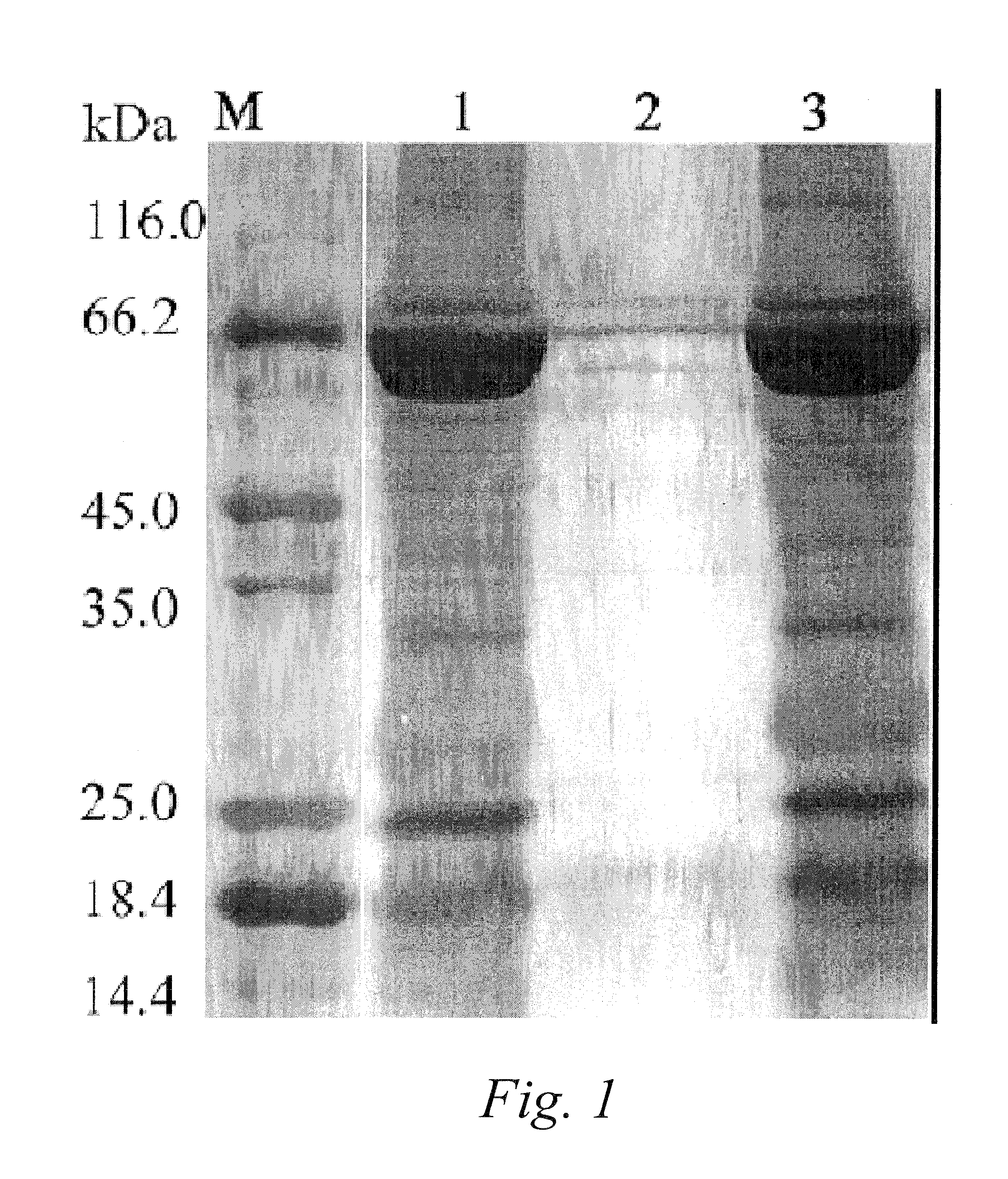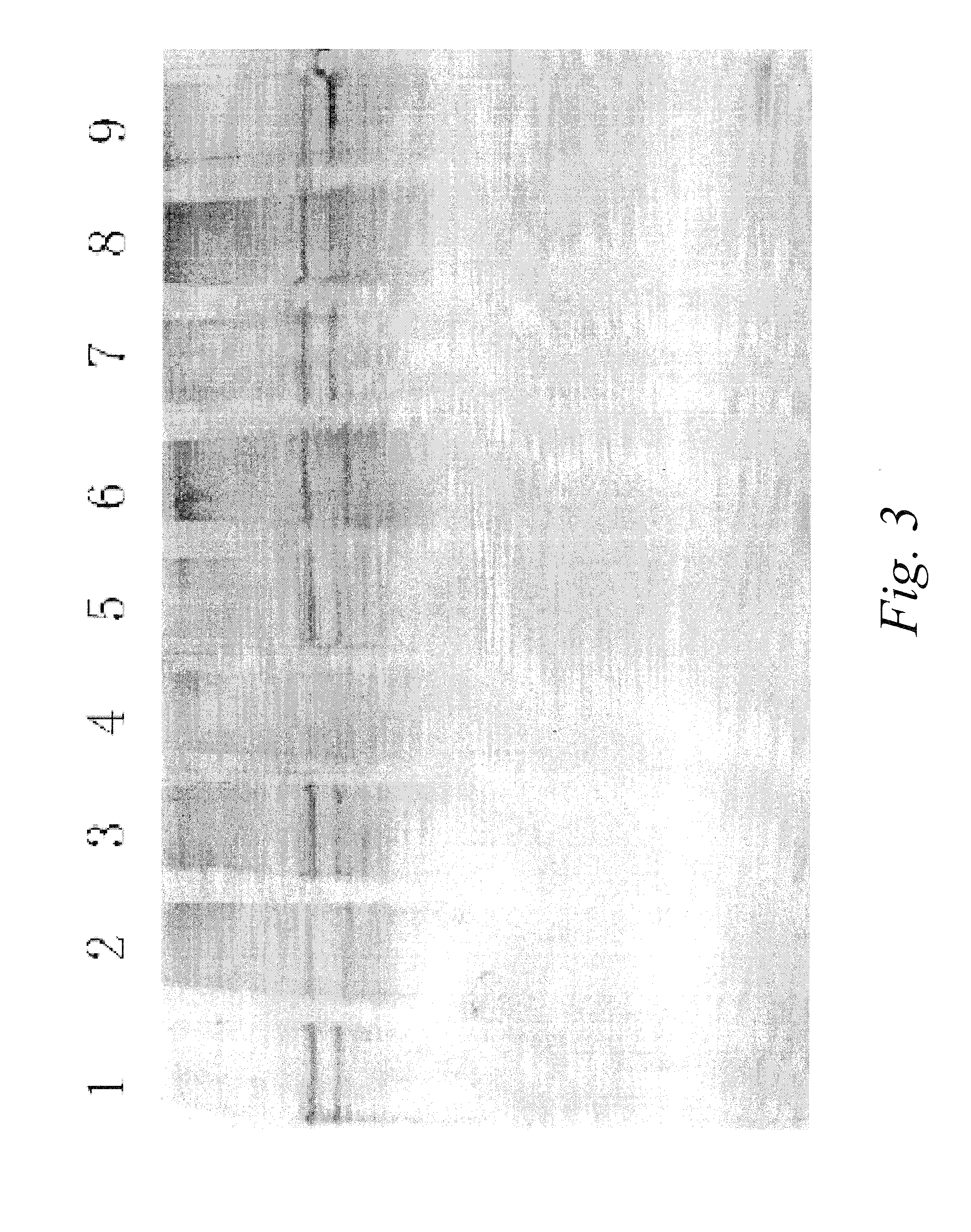Process for differential polypeptides detection and uses thereof
a polypeptide and detection method technology, applied in the field of differential polypeptide detection, can solve the problems of unpredictability of onset of many common chronic diseases, unfavorable individual variability in disease onset and drug treatment outcomes, and malignant cells that constitute tumors
- Summary
- Abstract
- Description
- Claims
- Application Information
AI Technical Summary
Benefits of technology
Problems solved by technology
Method used
Image
Examples
example 1
Preparation of Affinity Media
[0087]Two days before first immunization and each boost injection, 0.5 ml blood was collected from the central ear artery of New Zealand white rabbits with a 21-gauge needle and allowed to clot and retract at 37° C. overnight. The serum was decanted and clarified by centrifugation at 2,500 rpm for 15 minutes, then stored at −40° C. for later ELISA testing. Healthy human plasma (1 ml, ˜50 mg / ml) and 1.0 ml complete Freund's adjuvant were mixed thoroughly to form a stable emulsion. Then the emulsion was injected at multipoints beneath the skin of three 8-week-old rabbits (subcutaneously) in the area around the shoulders. Boosts were carried out in 2-week interval by immunizations with healthy human plasma (1 ml, ˜50 mg / ml) emulsified in 1 ml incomplete Freund's adjuvant. The ELISA was used to monitor the production of antibodies. After the 3rd boost immunization, when the titer reached 105, the rabbits were bled via carotid. Blood was collected with sodium...
example 2
Detection of Differential Polypeptides of Plasma from Healthy Volunteers
[0091]Differential polypeptides preparation: 20 μl human plasma of healthy volunteers was diluted with 980 μl Phosphate buffer (10 mM, pH 7.0). The total protein amount was estimated to be about 1 mg, from its absorbance at 280 nm and 260 nm and the equation of C(mg / ml)=1.45×A280nm−0.74×A260nm. The diluted plasma was loaded onto the affinity column (1 ml) with immobilized affinity media in Example 1. The flow-through was collected and concentrated to 20 μl, in which 5 μl was analyzed with reducing SDS-PAGE (12%) and stained with silver stain protocol. It was shown that there were only 9 faint bands visible, and the elution fraction has similar band pattern to the original sample. The reducing SDS-PAGE (12%) analysis confirmed the effectiveness of removal of most of the proteins of normal function in healthy human plasma.
Differential Polypeptides Identification and Characterization:
example 3
Detection of Differential Polypeptides of Plasma from Liver Cancer Patients
[0101]Liver cancer related differential plasma polypeptides preparation: 20 μl plasma from liver cancer patients was diluted with 980 μl Phosphate buffer (10 mM, pH 7.0). Total protein were adjusted to around 1 mg. The diluted plasma was loaded onto the affinity column (1 ml, affinity media prepared in the Example 1), the flow-through was collected and concentrated to 20 μl Five microliters were analyzed with Reducing SDS-PAGE (12%) and stained with silver stain protocol. It was shown that there were few faint bands visible, confirming the successful removal of most of the proteins of normal function in healthy human plasma and the preparation of liver cancer related Differential plasma polypeptides.
[0102]Five microliters of the above liver cancer related differential plasma polypeptides samples were reduced with 100 μl of reducing buffer and incubated at 60° C. for 10 minutes, then alkylated by adding 100 μl...
PUM
| Property | Measurement | Unit |
|---|---|---|
| pH | aaaaa | aaaaa |
| concentration | aaaaa | aaaaa |
| pH | aaaaa | aaaaa |
Abstract
Description
Claims
Application Information
 Login to View More
Login to View More - R&D
- Intellectual Property
- Life Sciences
- Materials
- Tech Scout
- Unparalleled Data Quality
- Higher Quality Content
- 60% Fewer Hallucinations
Browse by: Latest US Patents, China's latest patents, Technical Efficacy Thesaurus, Application Domain, Technology Topic, Popular Technical Reports.
© 2025 PatSnap. All rights reserved.Legal|Privacy policy|Modern Slavery Act Transparency Statement|Sitemap|About US| Contact US: help@patsnap.com



